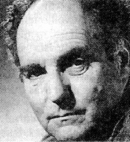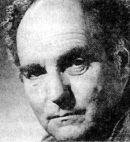Respect Muslims Now 4- Gellner Inflections


In many parts of the Muslim world, the rich interplay between rural and urban Islam, once an essential dynamic, has been largely erased. Rural Islam, with its ecstatic Sufi rituals, oral traditions, and deeply rooted communal customs, is now perceived as an embarrassment by the architects of modern, literate Islamic identity. This shift isn't accidental. As Ernest Gellner suggests, only the bureaucratic, text-centered urban form of Islam neatly aligns with the institutional demands of modern nation-states: it’s codifiable, teachable, and governable. It produces legal scholars, educated clerics, and administrative frameworks that integrate comfortably into state apparatuses.
Across the post-colonial Muslim world urban Islam became the state-engineered “official” religion. Many rulers adopted Islamic frameworks to build national identities and legal systems, often emerging from colonial legacies. Rather than importing European post-colonial or Marxist theories, these nations revived their own textual traditions, Quranic law, fiqh, and madrasa systems, as intellectual foundations for modern governance. This allowed them to marry familiar religious structures with Weberian bureaucratic principles, preserving continuity with Islamic heritage while crafting new frameworks of national power. As a result the rural form of Islam was suppressed. No modern state could be run by rituals, oral traditions and communal customs.
In Egypt, for example, Nasser’s regime suppressed Sufi orders and tightly controlled al-Azhar University’s curriculum, promoting only officially sanctioned religious education. In Turkey, Atatürk closed down Sufi tekkes (lodges) in 1925 to assert a modern secular-national identity that still drew legitimacy from Islam’s institutional edge. Pakistan, on independence, commissioned Islamic ideals into constitutional language, codifying blasphemy and faith-based law through federal bureaucracies rather than relying on imported ideologies.
Contemporary China provides a more striking contrast. Among its Muslim communities, this same dynamic plays out, but with ruthless clarity. The Uyghurs, primarily rural and tribal, practice a form of Islam that is deeply Sufi: shrines, saint cults, intergenerational oral traditions, and music. This was already under intense pressure, but by 2025 it has been forcefully erased, internment camps, bans on fasting during Ramadan, destruction of tombs of revered Sufi saints like Apak Hoja, and harsh reprisals against traditional music. Even Sufi musicians have been killed under the guise of “extremism,” silencing communal songs and rituals. Rural Islam’s very texture, rooted in bodily ritual and communal memory, is fundamentally incompatible with Beijing’s demand for surveillance, literacy, and control.
By contrast, the Hui Muslims, Mandarin-speaking and urban, have historically enjoyed relative freedom. Their Islam is mosque- and scripture- centered, relying on state-approved imam training and mosque-run schools. That clarity of structure allowed Hui Islam to survive for decades. But by 2025, even the Hui are facing new repression: mosque domes removed, Arabic calligraphy stripped from storefronts, imams required to teach 'Xi Jinping Thought', and children barred from madrasa instruction. Their religion is tolerated only within tight bureaucratic boundaries, private prayer permitted, communal identity effectively erased.
China’s logic is clear: it tolerates an urban, privatized Islam that integrates with state rationality, but crushes any form of Islam that could claim social autonomy or collective identity beyond the Party’s control. Where religion challenges state authority or provides an alternative framework for governance, whether rural or urban, it is seen as a threat.
What’s happening in China reflects a global pattern. Modernizing Muslim states have adopted urban Islam as a quasi-official national template not because European theory instructed them to, but because it provided internal tools: textual jurisprudence, mosque networks, clerical hierarchies, elements already embedded in their traditions. These systems were Weberian in practice, not ideology: legible to the state, scalable to bureaucracy, and capable of shaping national institutions without sidelining Islamic identity. Yet in choosing urban over rural, these regimes sacrificed the plural heritage of Islam. They sidelined the oral, mystical, communal voices that once were a coexisting form of Islamic practice, voices that offered alternative visions of community, belonging, and resistance.
China’s brutality toward the Uyghurs and its domestication of the Hui illustrate how states will co-opt the bureaucratisable and suppress the autonomous, whichever tradition it draws from. What’s truly striking is that these developments unfold not just at the margins, but across integrated nation-state systems that claim modernity, progress, and sovereignty, not by importing foreign ideology, but by reshaping their own religious traditions into tools of control.